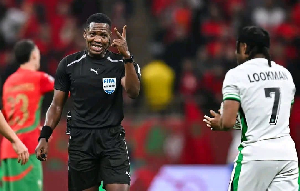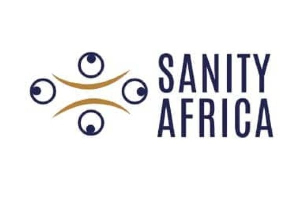The newest arrival of the Ghanaian Acts of God is road traffic accidents which have claimed the lives of 1,323 road users in Ghana between January and August per the statistics of the Motor Transport Traffic Unit of the Ghana Police Service.
Incessant prayer is capitalized upon when traveling by road to plead to the Almighty to change His plan of death for the travelers if it is their destiny. Meanwhile the driver behind the wheel waiting for the prayer’s end to hit the road has quaffed tots of our locally brewed spirit (Akpeteshie) to aid in “proper digestion” of the fufu he ate before the journey. Even though he is at fault as a result of loss of focus, commuters blame other innocent drivers due to ignorance of road traffic regulations.
It’s been estimated that more than 90% of road traffic accidents are caused by human error with nearly 1.3 million deaths worldwide in road crashes each year, on average 3,287 deaths a day. An additional 20-50 million are injured or disabled. Road traffic crashes rank as the 9th leading cause of death and account for 2.2% of all deaths globally. Over 90% of all road fatalities occur in low and middle-income countries, which have less than half of the world's vehicles. Road crashes cost low and middle-income countries USD $65 billion annually, exceeding the total amount received in developmental assistance. (ASIRT)
What is Ghana doing aside prayers?
For years, the road safety agencies in Ghana like the Driver and Vehicle Licensing Authority (DVLA), the MTTU and the National Road Safety Commission (NRSC) have been engaging in campaigns to reduce traffic accidents religiously ahead of major festivities in the country.
The DVLA is in charge of licensing to regulate the number of qualified vehicles and drivers on our roads while the MTTU is in charge of bringing the unlicensed and unqualified vehicles and drivers to order and finally the NRSC is in charge of sensitization on road safety. Are they really using funds allocated to them judiciously?!
The most recent exercise was in the form of an unannounced collaborative visit to four major lorry stations in Accra with heavy media presence to conduct road safety checks on vehicles. Meanwhile, the majority of public transport vehicles in the city are not members of lorry stations and move around with their business at no regular pace. The following violations were discovered at the lorry stations: worn-out tyres, incomplete wheel nuts, cracked windscreens, tattered seats and broken or non-functioning wipers, broken or unfixed tail lights, indicator lights, head lights, fake driving licenses or unqualified licenses and counterfeit road worthy certificate stickers.
After the exercise the DVLA with a smile told the media the exercise would be replicated in all the regions and continued. Perpetrators would be punished by law. The MTTU also were satisfied with the reduction in death rates by 6% hoping to reduce further by 15% in 2015.
Is that all we do and can do?
Actually that is all that is done by the road safety agencies for over a decade creating breeds of self-proclaimed smart drivers who have a hint about the exercise and relocate their vehicles to the rural areas, where there is little or no surveillance by these institutions, till after the “nine-day wonder” dies out. Others also resort to working at night when checks are mainly security-centered and not on road safety.
We can do more as a country to reduce road traffic fatalities significantly. Education on road use and safety is poorly directed at the insignificant few when a road user includes school children and the general population.
In terms of Education, countries like Ireland and US among others have moved up a notch. The former extends the education and training to:
(a) Children in school facilitated by road-traffic instructors and school teachers;
(b) Adolescents in the principles of safe driving and in good driving attitudes; and
(c) Refresher courses for older drivers to bring home safe-driving principles and to refresh their knowledge of traffic law; and by means of newspaper, radio, television, and other publicity, to draw the attention of all road users both to dangers and to safe practices on the road.
In the US, Amos Neyhart, a professor at Penn State University, is credited with starting the first high school driver's ed course, which he did in 1934 at a high school in State College, Pennsylvania.
According to the laws of New York State in the US, in order for applicants to receive a driver’s education certificate, the student must complete a NYS-DTSE (Driver and Traffic Safety Education) course at a school approved by the NYS education department (NYSED) and Department of Motor Vehicles (DMV). The applicant must be the age of 16 years or older. A Student Certificate of Completion (MV-285), (also known as the “Blue Card”) will be granted to those who fulfill laid-down requirements.
Ghana’s literacy rate is 71.5% (15+) of the population inferring that many people complete senior high school education. The introduction of Driver and Traffic Safety Education in our high school curriculum would invariably increase our knowledge of road safety and urge each and every individual to serve as a check to other drivers when they put lives at risk. The high school is the foundation to efficient and effective road safety education. The students are the future drivers so why not invest in educating them from that level. GHANA FIRST.
ISMAIL AKWEI
Opinions of Monday, 21 October 2013
Columnist: Ismail Akwei














